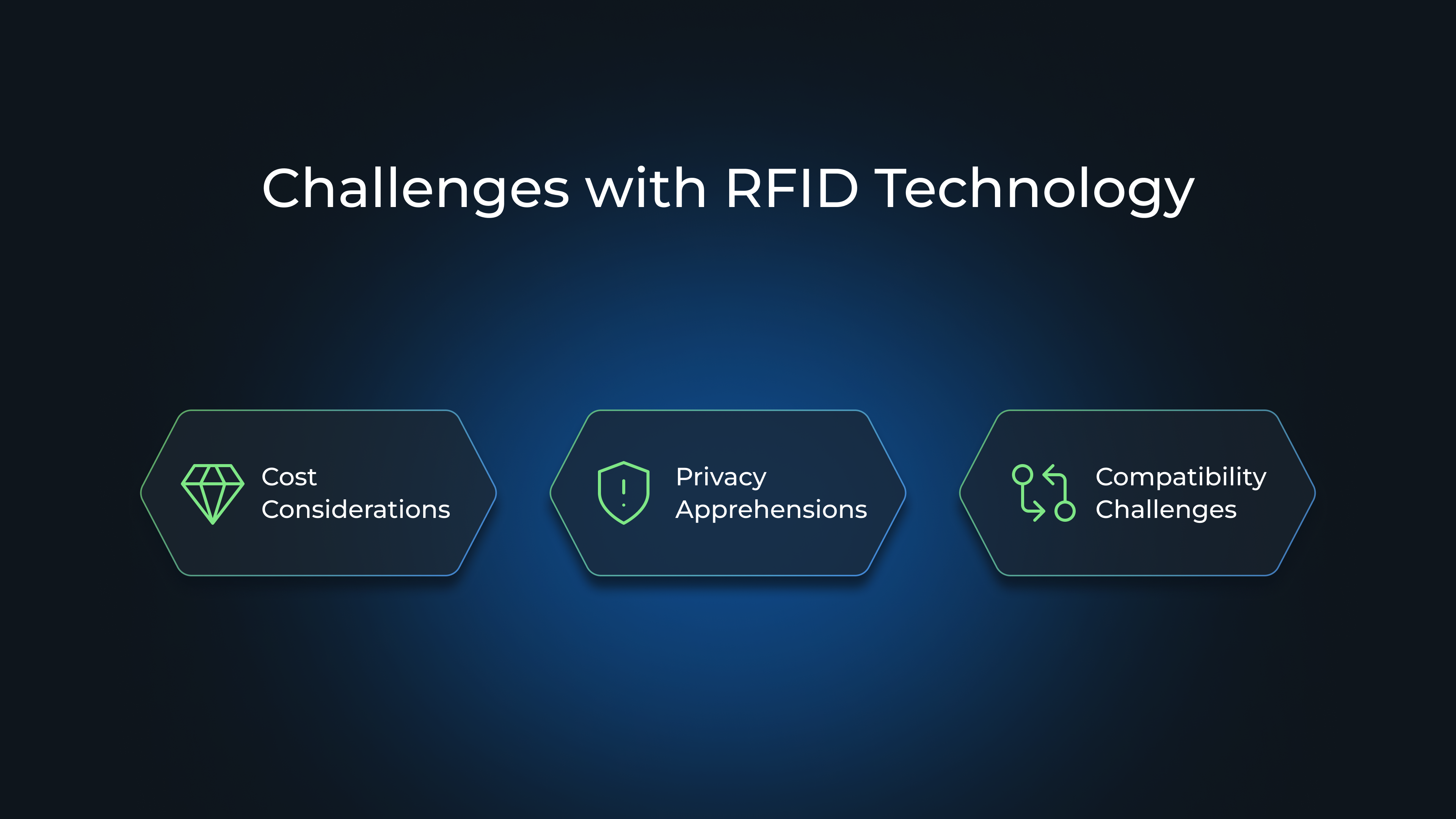Inventory management is a critical aspect of running a successful business. Without accurate and up-to-date information about the availability of products, companies can face issues like stockouts, delayed orders, and dissatisfied customers. This is where inventory transparency becomes crucial.
What is Inventory Transparency?
Inventory transparency refers to having complete visibility and real-time tracking of inventory across all stages of the supply chain. It allows businesses to monitor stock levels, track product movements, and analyze inventory data accurately. At the heart of achieving inventory transparency lies the effective use of technology, particularly RFID (Radio Frequency Identification) technology.
RFID technology utilizes small electronic tags that contain unique identification codes. These tags can be attached to individual items or packaging, enabling seamless and automatic identification of products as they move through the supply chain. The tags emit radio waves that are picked up by RFID readers, which then transmit the information to a central database. This allows businesses to have up-to-date and accurate information about the location and status of their inventory.
With RFID technology, businesses can achieve a higher level of inventory accuracy compared to traditional methods such as manual counts or barcode scanning. The real-time data provided by RFID enables companies to make informed decisions regarding stock levels, procurement, and order fulfillment. Instead of relying on guesswork or outdated inventory records, businesses can access real-time data to optimize their inventory management processes.
The Role of Technology in Inventory Transparency
Implementing technology solutions is key to achieving inventory transparency. Among the various technologies available, RFID technology has emerged as a powerful tool for real-time inventory tracking. RFID tags can be attached to individual items or packaging, allowing for seamless and automatic identification of products as they move through the supply chain.
In addition to RFID, other technologies such as barcode scanning, GPS tracking, and cloud-based inventory management systems also contribute to inventory transparency. Barcode scanning enables businesses to quickly and accurately capture product information, while GPS tracking allows for real-time monitoring of product movements during transportation. Cloud-based inventory management systems provide a centralized platform for storing and analyzing inventory data, facilitating collaboration and decision-making across the supply chain.
Furthermore, advancements in data analytics and artificial intelligence have further enhanced inventory transparency. By leveraging these technologies, businesses can gain valuable insights from their inventory data, such as demand forecasting, trend analysis, and optimization of reorder points. These insights enable companies to make data-driven decisions and continuously improve their inventory management practices.
What is RFID Technology?
RFID technology, which stands for Radio Frequency Identification, utilizes radio waves to transmit and receive information between RFID tags and readers. The tags consist of a microchip and an antenna, while the readers are devices that capture the information from the tags. This technology has revolutionized various industries and offers several advantages over traditional barcode systems.
RFID technology works by emitting radio waves from the tags, which are then picked up by the readers within a certain range. The readers then transmit the collected data to the central system, where it is processed and made available for real-time tracking. Unlike barcodes, RFID tags do not require a direct line of sight or manual scanning. This enables quick and accurate capture of data, making RFID technology ideal for inventory tracking.
How Does RFID Technology Work?
RFID tags consist of a microchip and an antenna. The microchip stores the unique identification number and other relevant data, while the antenna allows the tag to transmit and receive radio waves. When a reader comes into proximity with an RFID tag, it emits radio waves that power the microchip on the tag. The tag then sends its stored information back to the reader, which captures and processes the data.
The captured data is then transmitted to the central system, where it can be analyzed and used for various purposes, such as inventory management, supply chain optimization, and asset tracking. The central system can provide real-time visibility into the location and status of tagged items, enabling businesses to make informed decisions and improve operational efficiency.
Benefits of RFID for Inventory Tracking

RFID technology offers numerous benefits when it comes to inventory tracking:
- Real-time visibility: RFID technology provides instant access to accurate inventory data, eliminating the need for manual counts or guesswork. Businesses can have a clear picture of their inventory levels at any given time, enabling them to make informed decisions and avoid stockouts or overstocking.
- Efficiency and accuracy: With RFID, inventory counts can be performed more quickly and accurately, reducing the risk of human errors and saving valuable time. Instead of manually scanning each item, RFID readers can capture multiple tags simultaneously, making the process much faster and more efficient.
- Automated processes: RFID enables automation of inventory-related tasks such as receiving, picking, and replenishing. With RFID technology, businesses can streamline their operations and reduce the reliance on manual labor. This not only improves efficiency but also frees up employees to focus on more value-added activities.
- Enhanced security: RFID technology allows for better security measures, such as anti-theft capabilities and tamper-proof tags. Each RFID tag has a unique identification number, making it difficult for thieves to counterfeit or tamper with the tags. This helps minimize losses due to theft or unauthorized access.
- Scalability: RFID technology is highly scalable, making it suitable for businesses of all sizes. Whether you have a small retail store or a large warehouse, RFID can be implemented to meet your inventory tracking needs. The technology can easily accommodate changes in inventory volume and can be integrated with existing systems for seamless operations.
- Improved customer experience: By accurately tracking inventory, businesses can ensure product availability and reduce the likelihood of stockouts. This leads to improved customer satisfaction and loyalty, as customers can rely on businesses to have the products they need when they need them.
In conclusion, RFID technology has revolutionized inventory tracking by providing real-time visibility, efficiency, automation, enhanced security, scalability, and improved customer experience. As businesses continue to adopt RFID technology, the benefits will only continue to grow, enabling organizations to optimize their operations and stay ahead in today’s competitive market.
RFID Technology Development for Inventory System
As the landscape of inventory management undergoes a paradigm shift, the implementation of RFID technology emerges as a transformative solution. Before delving into this technological revolution, a critical first step is the thorough assessment of your current inventory system. By identifying gaps, challenges, and improvement areas, this evaluation lays the foundation for setting clear goals and objectives for the RFID implementation process. From selecting the right RFID technology, tailored to the unique needs of your business, to comprehensive staff training programs provided by experts like WeSoftYou, every facet of this journey is meticulously crafted to enhance accuracy, streamline operations, and propel efficiency in the realm of inventory tracking
Assess Current Inventory System
Before implementing RFID technology, it is crucial to assess your current inventory management system. This evaluation helps identify potential gaps, challenges, and areas that can be improved by adopting RFID technology. It is also necessary to define clear goals and objectives for the RFID implementation process.
During the assessment, you will analyze your current inventory processes, such as how items are tracked, monitored, and recorded. This includes evaluating the accuracy and efficiency of your existing system, as well as identifying any bottlenecks or areas for improvement. By conducting a thorough assessment, you can gain a comprehensive understanding of your inventory management system’s strengths and weaknesses.
Furthermore, it is important to involve key stakeholders in the assessment process. This includes individuals from various departments, such as inventory management, IT, and operations. By involving different perspectives, you can ensure that all relevant factors are considered and that the RFID implementation aligns with the overall goals of the organization.
Choose the Right RFID Technology
Choosing the right RFID technology involves considering factors such as tag type, reader capabilities, and integration with existing systems. Working with an experienced software development company like WeSoftYou can greatly simplify the process. We at WeSoftYou have expertise in developing and implementing RFID solutions tailored to the specific needs of businesses across different industries.
When selecting the appropriate RFID technology, it is important to consider the specific requirements of your inventory tracking system. This includes determining the type of RFID tags that will be most suitable for your products or assets. For example, if you are tracking items with metal components, you may need to choose RFID tags that are specifically designed for metal surfaces.
In addition to tag selection, you also need to consider the capabilities of RFID readers. This includes factors such as read range, read speed, and the ability to handle multiple tags simultaneously. By understanding the capabilities of different RFID readers, you can ensure that they meet the requirements of your inventory tracking system.
Furthermore, integration with existing systems is another crucial aspect to consider when choosing RFID technology. This includes evaluating the compatibility of RFID software with your current inventory management software or enterprise resource planning (ERP) system. Working with a software development company like WeSoftYou can help ensure seamless integration and minimize any potential disruptions during the implementation process.
Train Staff on RFID Use
Introducing a new technology like RFID requires proper training for employees who will be using it. Ensuring that staff understands how to operate the RFID readers, interpret the data, and troubleshoot any issues is essential for a successful implementation. WeSoftYou can provide training programs customized to your organization’s requirements.
Training programs for RFID use should cover various aspects, including the basics of RFID technology, how to use RFID readers, and how to interpret and analyze the data collected. It is important to provide hands-on training and practical exercises to familiarize employees with the RFID system and its functionalities.
In addition to technical training, it is also essential to educate staff on the benefits and advantages of RFID technology. This includes explaining how RFID can improve inventory accuracy, streamline operations, and enhance overall efficiency. By highlighting the positive impact of RFID technology, you can increase employee buy-in and ensure a smooth transition to the new system.
Moreover, ongoing support and refresher training should be provided to employees even after the initial implementation. This ensures that staff members stay up-to-date with any system updates or changes and can continue to maximize the benefits of RFID technology for inventory tracking.
Challenges in RFID Implementation
As organizations embrace the transformative potential of RFID technology, challenges in implementation emerge, demanding careful consideration and strategic solutions. WeSoftYou, drawing from its extensive experience, addresses common concerns surrounding cost, privacy, and compatibility, providing expert guidance to navigate the complexities of RFID implementation seamlessly. From cost-effective planning to privacy-centric design and seamless integration with existing infrastructure, we understand the intricacies of RFID challenges and offer tailored solutions to ensure a secure and efficient implementation process.

Common Concerns with RFID Technology
While RFID technology offers significant benefits, some common concerns need to be addressed during implementation. Concerns related to cost, privacy, and compatibility with existing infrastructure can be tackled through careful planning and expertise. WeSoftYou has extensive experience in addressing these concerns and can guide you through the implementation process smoothly.
When it comes to cost, WeSoftYou understands that implementing RFID technology can be a significant investment. However, it is important to consider the long-term benefits and cost savings that RFID can bring. By automating processes and improving efficiency, RFID can help reduce labor costs and minimize errors. Our team of experts will work closely with you to develop a cost-effective implementation plan that aligns with your budget and business goals.
Privacy is another concern that often arises with RFID technology. WeSoftYou recognizes the importance of protecting sensitive information and ensuring compliance with privacy regulations. Our RFID systems are designed with privacy in mind, incorporating features such as data encryption and access controls. We also provide comprehensive training to your staff on privacy best practices to ensure that your data remains secure.
Compatibility with existing infrastructure is another challenge that organizations may face when implementing RFID technology. WeSoftYou has the expertise to seamlessly integrate RFID systems with your existing infrastructure, minimizing disruptions and maximizing efficiency. Our team will conduct a thorough assessment of your current systems and develop a customized implementation plan that takes into account your unique requirements.
Data Security with RFID Systems
Data security is a critical aspect of any technology implementation. WeSoftYou understands the importance of protecting your data and can provide robust security measures to safeguard your RFID systems. From encryption to access controls, we ensure that your data remains secure and confidential.
When it comes to data encryption, WeSoftYou employs industry-leading encryption algorithms to ensure that your data is protected from unauthorized access. Our encryption methods are designed to be highly secure and resistant to hacking attempts. Additionally, we regularly update our encryption protocols to stay ahead of emerging threats and vulnerabilities.
Access controls are another important aspect of data security. WeSoftYou implements strict access controls to ensure that only authorized personnel have access to your RFID systems and the data they contain. We employ multi-factor authentication methods, such as biometric identification and smart card authentication, to prevent unauthorized access. Our access control policies are customizable, allowing you to define different levels of access for different users based on their roles and responsibilities.
In addition to encryption and access controls, WeSoftYou also provides comprehensive training to your staff on data security best practices. We believe that a well-informed and vigilant workforce is crucial in maintaining data security. Our training programs cover topics such as password management, phishing awareness, and social engineering prevention, empowering your employees to actively contribute to the security of your RFID systems.
Key Success Factors of RFID Implementation
RFID (Radio Frequency Identification) technology has revolutionized inventory management and tracking systems, providing businesses with real-time visibility and control over their assets. However, implementing RFID is just the first step towards achieving inventory transparency and streamlining operations. To truly measure the success of RFID implementation, it is essential to define key performance indicators (KPIs) that accurately reflect the impact of this technology on your business.
Main Performance Indicators for RFID Systems
When it comes to evaluating the effectiveness of RFID implementation, KPIs play a crucial role. These metrics allow you to assess the tangible benefits and return on investment that RFID brings to your organization. Some of the key performance indicators for RFID systems include:
- Inventory Accuracy: RFID enables real-time tracking of inventory, minimizing discrepancies between physical stock and recorded data. By measuring inventory accuracy, you can determine the effectiveness of RFID in reducing errors and improving overall inventory management.
- Order Fulfillment Time: With RFID, the process of picking and packing orders becomes faster and more efficient. By measuring the time it takes to fulfill orders, you can assess the impact of RFID on your order processing speed and customer satisfaction.
- Reduction in Stockouts: RFID allows for better inventory visibility, reducing the occurrence of stockouts and ensuring that products are always available when customers need them. By measuring the reduction in stockouts, you can gauge the effectiveness of RFID in preventing lost sales opportunities.
- Cost Savings: RFID can lead to significant cost savings by improving operational efficiency, reducing labor costs, and minimizing inventory shrinkage. By measuring the cost savings achieved through RFID implementation, you can quantify the financial impact of this technology on your bottom line.
At WeSoftYou, we understand the importance of selecting the most relevant KPIs for your business. Our team of experts can help you identify the key performance indicators that align with your goals and develop comprehensive reporting mechanisms to track and analyze the success of your RFID implementation.
Improvement and Adaptation with RFID Technology
RFID technology is constantly evolving, and it is crucial to have a system in place for continuous improvement and adaptation. At WeSoftYou, we offer ongoing support and monitoring services to ensure that your RFID systems are always performing at their best.
Our team of professionals will closely monitor the performance of your RFID systems, identifying areas for improvement and recommending necessary updates or enhancements. By staying up-to-date with the latest advancements in RFID technology, we can help you optimize your inventory transparency efforts and ensure that you are leveraging the full potential of RFID for your business.
Implementing RFID technology for real-time inventory tracking brings significant advantages to businesses, enabling inventory transparency and streamlined operations. At WeSoftYou, we have a proven track record of developing and implementing RFID solutions tailored to the unique needs of businesses across industries.
Are you ready to take control of your inventory like never before? Contact us today for a free consultation or project estimation, and let WeSoftYou help you achieve inventory transparency through RFID technology.
Remember, with WeSoftYou by your side, you can unlock the full potential of RFID and revolutionize your inventory management processes. Don’t wait any longer – reach out to us now and embark on a journey towards greater efficiency and profitability!
FAQ
RFID (Radio-Frequency Identification) technology is a system that uses radio waves to identify and track objects, people, or animals. It consists of tags or labels containing a unique identifier and a reader device that communicates with the tags. RFID is widely used in various applications, including inventory tracking, access control, supply chain management, and contactless payments. It offers a more efficient and automated way to collect data and monitor the movement of items or individuals, making it a valuable tool in a range of industries.
RFID technology improves inventory tracking by providing real-time visibility, automation of processes, enhanced accuracy, and the ability to track individual items without line-of-sight scanning.
Common challenges during RFID implementation include concerns about cost, privacy, and compatibility with existing infrastructure. WeSoftYou has experience in addressing these concerns and can guide you through the implementation process smoothly.
The success of RFID implementation can be measured through key performance indicators (KPIs) such as inventory accuracy, order fulfillment time, reduction in stockouts, and cost savings. WeSoftYou can help you identify the most relevant KPIs for your business and develop comprehensive reporting mechanisms.





















